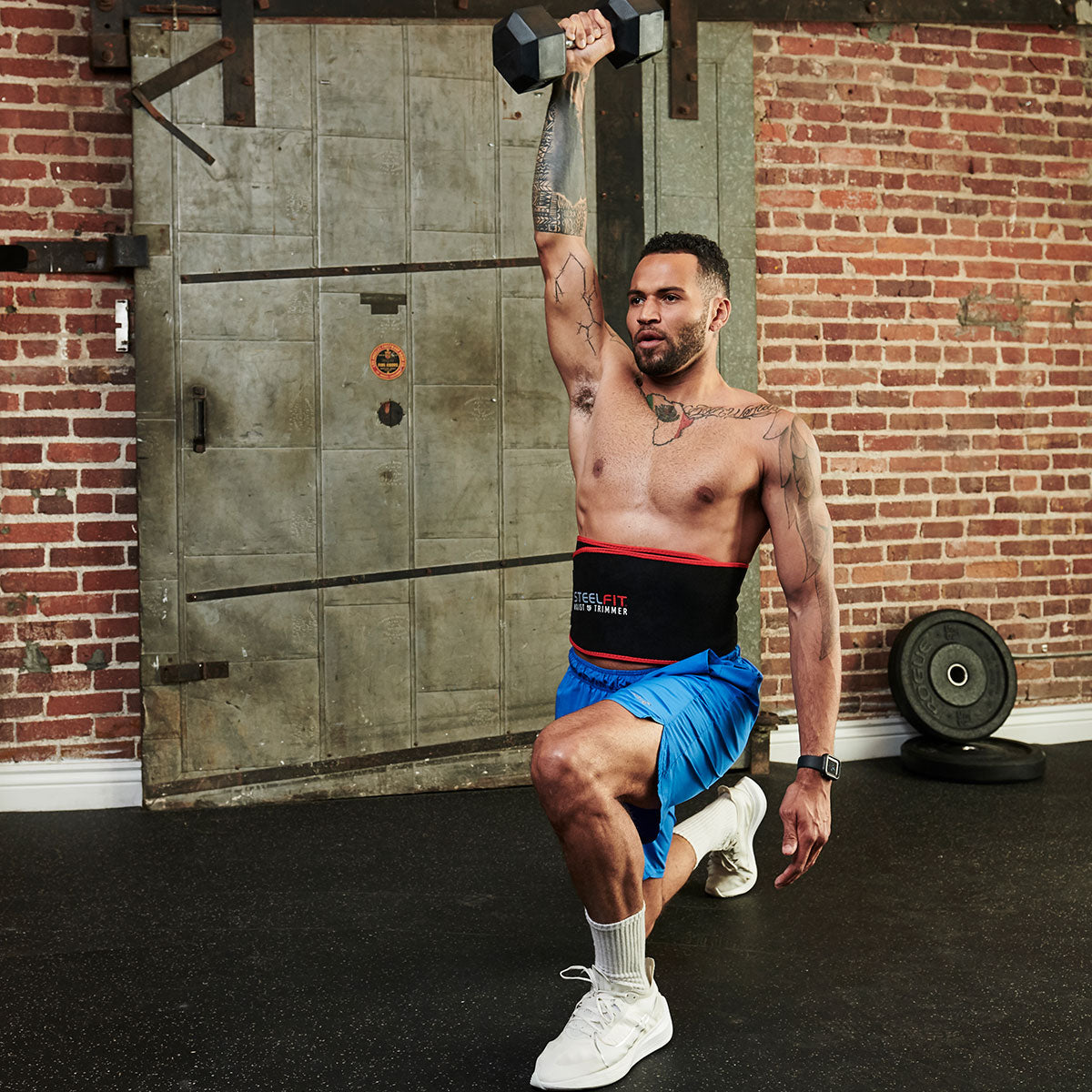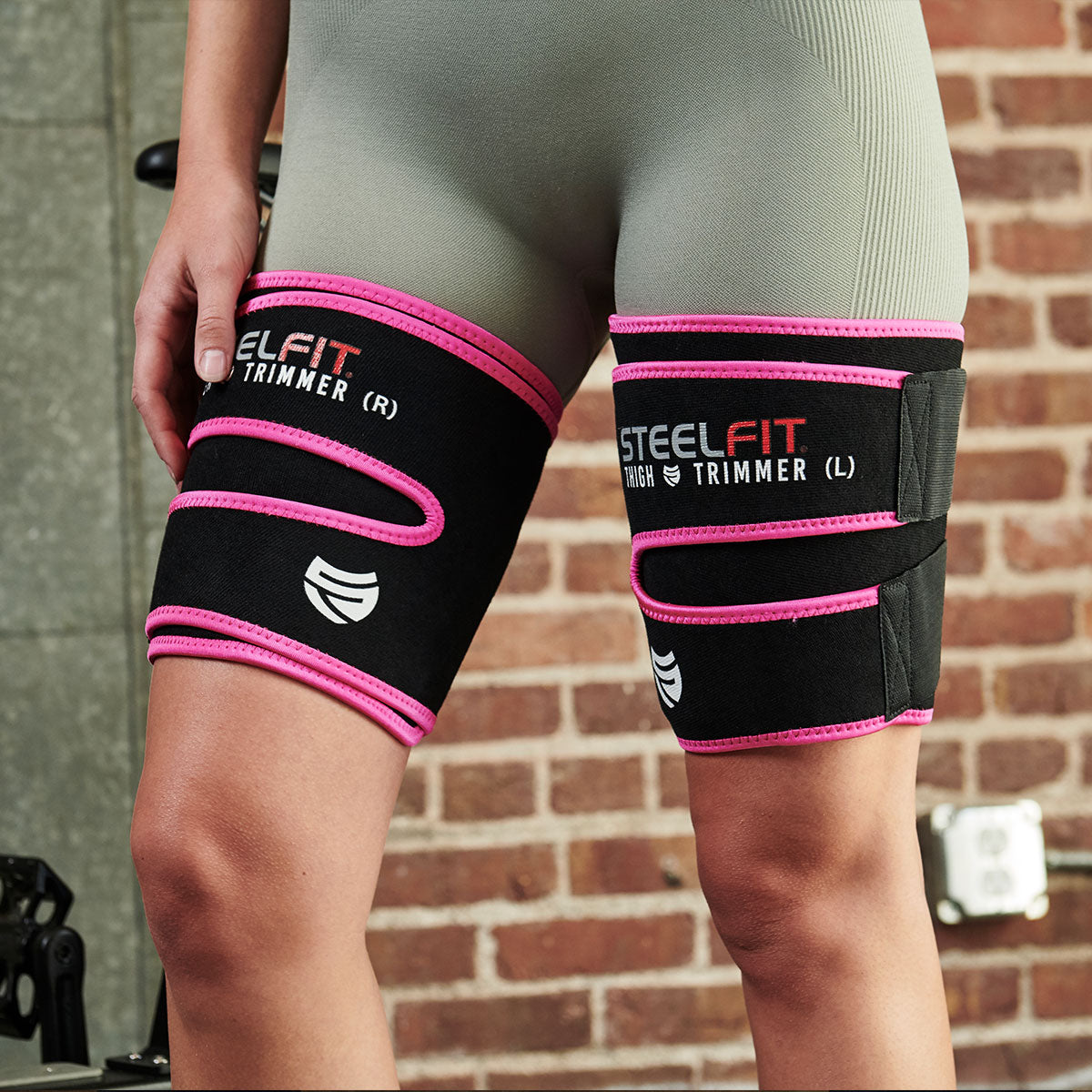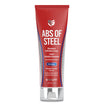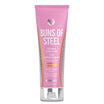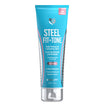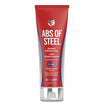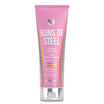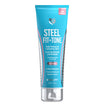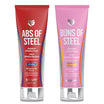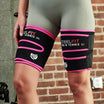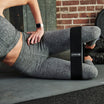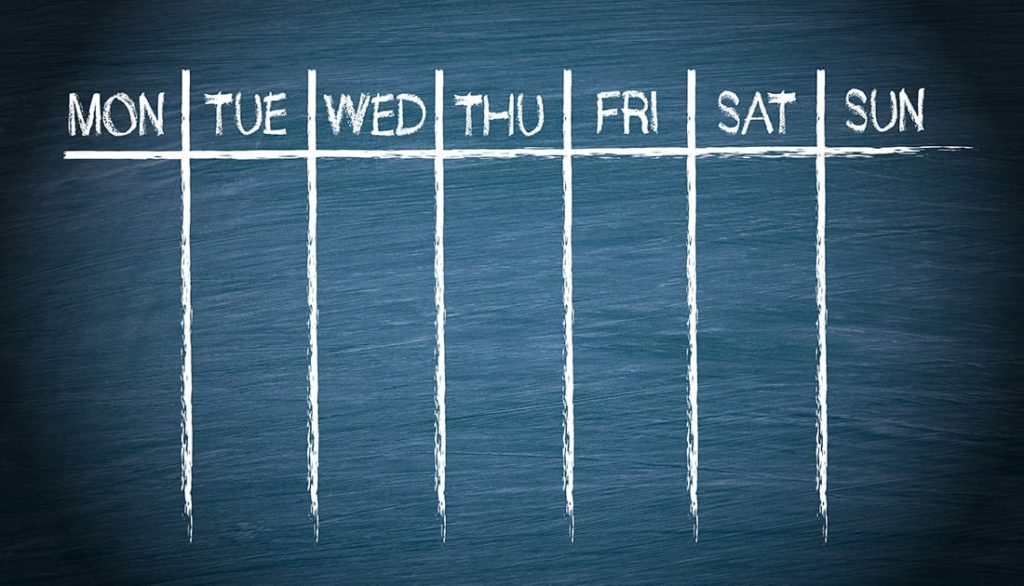If you want to know the pros and cons of training fasted and whether or not it is superior for losing fat or building muscle, you want to read this article.
For decades, if you wanted to lose weight and get rid of that unsightly body fat, you performed hour after hour of fasted cardio.
Entire lifetimes have been spent slogging it out on treadmills, bikes and ellipticals under the premise that training with no food in your stomach (a.k.a. training fasted) was the one true way to banish body fat for good.
And, off the bat, it sounds like a pretty solid idea.
When deprived of food, the body inherently turns to stored energy (i.e. body fat) for fuel, but does that logic hold up in research?
Does training fasted lead to better fat loss and body composition?
We answer all of those questions and more in this review of the pros and cons of fasted training.
What is Fasted Training?
Fasted training is simply performing exercise when food is no longer being digested or absorbed by your body.
Your body enters this fasted state approximately three to six hours after you eat a meal. The time it takes to fully digest and absorb a given meal depends on the overall size (caloric density) of the meal, as well as how much protein, fat, carbohydrates, and fiber constitute said meal.
The greater amount of fiber, fat, and/or protein a meal contains, the longer it will take to digest.
Benefits (Pros) of Fasted Cardio
Enhances Fat Burning
Exercise science has pretty well established that performing fasted cardio burns significantly more fat than performing the same bout of cardio in a fed state. A 2016 systematic review and meta-analysis including 27 studies even concluded that: <1>
“… aerobic exercise performed in the fasted state induces higher fat oxidation than exercise performed in the fed state.”
The reason your body burns more fat when you train fasted as opposed to when it’s fed is pretty simple, and it’s rooted in your physiology. You see, the body is incredibly adept at burning carbohydrates for fuel during exercise. <2> And, when more of it is available (i.e. in the 2-3 hours following a meal), your body will by default burn those carbohydrates first, then turn to fat for the additional energy, should it be needed.
This is the main reason why study after study over the decades has noted that when people consume carbohydrates prior to exercise, they inherently burn more carbohydrate for fuel, along with less fat, during their workout. <3,4>
So, to “force” your body, in a sense, to utilize fat for fuel, you avoid eating prior to training.
Helps Eliminate Unwanted Belly Fat
No matter how slim, toned, or ripped you may be, you’re bound to have at least one area on your body that holds some “stubborn” fat. Be it the hips, thighs, or lower abdomen, each of us has one region of fat that won’t go away, regardless of how much we diet or exercise.
But, just because we have trouble with that one area of stubborn fat, doesn’t mean we have poor genetics. You see, stubborn fat is a “defense mechanism” of sorts your body has to protect against extremely low levels of body fat.
The good news is, is that fasted cardio can help you eliminate stubborn fat.
How so?
Let’s review a bit about what makes stubborn body fat so “stubborn” anyway.
Every one of the fat cells in your body has receptors on them, and chemicals your body produces called catecholamines bind to these receptors. Now, these fat cell receptors fall into one of two categories -- alpha receptors and beta receptors. <5,6>
We’ll spare you the complex inner workings of how these receptors specifically affect fat loss/storage, and summarize it as basically:
- Alpha receptors -- block fat burning
- Beta receptors -- promote fat burning
The more alpha receptors a fat cell has, the more “stubborn” it is to release its stored fatty acids for oxidation, and the more beta receptors a fat cell has, the more readily it can be accessed.
As you probably guessed, the regions of fat on your body that won’t see to go away are more densely packed with alpha receptors than beta receptors, which is part of the reason they are harder to get rid.
But it doesn’t end there.
Regions of stubborn body fat also receive less blood flow, and this brings us back to our discussion of catecholamines and alpha/beta receptors.
The less blood flow an area of fat your body receives, the fewer catecholamines those fat cells are exposed two. Coupled with the fact that those areas already have a higher concentration of alpha receptors than beta receptors, and you’ve got the perfect recipe for incredibly stubborn body fat that just won’t go away.
Now, here’s where the real beauty of fasted cardio comes into the picture.
When you train in a fasted state, blood flow to the abdominal region is increased <8>, which means that those areas of stubborn body fat receive greater amounts of those fat burning chemicals called catecholamines.
You can further up the ante on eliminating stubborn body fat, by supplementing with ingredients such as yohimbine, which serve as alpha receptor antagonists. These compounds bind to alpha receptors, turning them “off” in a sense and allowing greater amounts of catecholamines like adrenaline and noradrenaline to bind to beta receptors and “open the floodgates” to help burn stubborn body fat.
Workout Done for the Day
One of the less discussed benefits of training fasted is that by working out first thing in the morning, you’ve already ticked the “work out” box of the day, and now you have the rest of the day to focus on the more important things like work, family, etc.
Plus, as an added bonus, you’ll also have greater energy, mood, and focus thanks to the flood of brain-boosting chemicals that are released during the course of exercise, helping you be more productive during the early part of your day when so many other people can’t seem to function without 4-6 cups of coffee.
Avoid Stomach Upset
For many people, they train fasted simply because training shortly after eating leads to indigestion, nausea, and just a general feeling of sluggishness and lethargy. By training fasted, you avoid the rather unpleasant sensation of feeling like you’re going to puke after a set of heavy squats (at least partially) or high-intensity interval training.
The Drawback (Cons) of Fasted Cardio
Increased Potential to “Bonking”
Food is fuel for our body.
If you train first thing in the morning upon waking, and your muscles have fully replenished their glycogen stores overnight, it’s very possible you will “bonk” or “hit a wall” during your workout.
This “bonking” sensation is caused by low blood glucose and glycogen levels in the body. In a sense, your muscles are running low and fuel, and your ability to hit “top speed” is significantly diminished.
But what if eating prior to training causes my stomach to feel upset?
If you’re one of those people who doesn’t like to train with a full-feeling stomach, yet still seems to bonk during their workouts, try having a small, low-fiber snack like a banana or glass of orange juice 30-45 minutes prior to training.
These options are rapidly digested, meaning they’ll be in and out of your stomach quickly. You’ll avoid the full stomach feeling and have ample glucose to power you through your training.
Reduced Training Intensity
Training fasted, while it might be good for burning belly fat, isn’t really all that ideal when it comes to high-intensity forms of exercise, such as sprinting or heavy resistance training.
Remember, glucose (glycogen) is the kind of fuel your muscles thrive on for intense exercise, regardless of what the keto, primal, and low carb communities tell you. Simply put, if you want a superior quality workout, you want some form of carbohydrate in your system.
Your body cannot oxidize fat as quickly as it can glucose <12>.
You see, the body will prioritize which nutrient it burns for fuel, provided all are available. This order of energy substrate utilization is:
- Blood Glucose (blood sugar)
- Muscle Glycogen (the storage form of glucose)
- Body Fat
- Protein (pulled from muscle)
So, what this means, is that if carbs are available, whether in the form of circulating blood sugar or muscle glycogen, your body will burn it before it touches body fat or dietary fat. This also means that during high-intensity exercise, your body will want carbohydrates to burn, as it is the nutrient most easily converted to usable energy. It can use fat, but it’s far from optimal and not very efficient.
As such, if you want to maximize performance, you don’t want to train on a fasted stomach.
Higher Cortisol Levels
Cortisol is the stress hormone your body releases when energy stores are low. Performing exercise of any kind prompts an increase in cortisol, as does fasting. Do both of these actions frequently enough (i.e. fasted training) and you may start to develop chronically elevated cortisol levels, which promotes fat storage and reduce fat burning. <9,10>
The Verdict on Fasted Training
So, it appears that there’s both good and bad when it comes to fasted training and fasted cardio, as it is with most things in life.
But, there are a few other things that warrant consideration.
First, we know that that the number of calories you burn during a workout account for a very small fraction of your total daily energy expenditure (TDEE). What you eat during the day and how much of a deficit you use has a far greater impact on your ability to lose weight than whether you train fasted or not.
There’s even some research by Dr. Brad Schoenfeld et al. that shows that there is no difference in body composition changes (i.e. fat loss) when it comes to training fasted vs training fed. <11>
Additionally, there’s also some research noting that if you burn greater amounts of fat during an earlier part of the day (i.e. performing fasted cardio first thing in the morning), your body will actually burn less fat later on in the day. <13>
Essentially what happens, is that the body more or less “compensates” for the increased fat burning it did earlier in the day by downregulating fat burning and upregulating glucose burning the rest of the day.
In the end, training fasted can be useful for some morning bouts of cardio if you’re trying to lose some stubborn body fat, but if you’re looking to maximize performance or just lose fat in general, training fed would be the superior option.
Training in a fed state ensures that energy stores are topped off and you’ll be able to push harder in your workouts, which allows you to burn more calories, ultimately creating a larger caloric deficit. This ultimately winds up in a better fat loss and body composition.
But, for those days when you want to sweat it out first thing in the morning on an empty stomach and rid stubborn belly fat for good, there’s only one option...
THE Best Pre-Workout for Fasted Cardio and Weight Training
Steel Sweat™ is a metabolic catalyst that increases thermogenesis, energy expenditure, and fat burning. The all-natural ingredients in Steel Sweat™ help burn stubborn body fat and help you achieve the lean, trim physique that you’ve strived so long to achieve.
Simply mix up a scoop of this energy supplement for fasted and weight training first thing in the morning before hitting the gym and you’re on your way to banishing belly fat for good!
References
- Vieira, A. F., Costa, R. R., Macedo, R. C. O., Coconcelli, L., & Kruel, L. F. M. (2016). Effects of aerobic exercise performed in fasted v. fed state on fat and carbohydrate metabolism in adults: a systematic review and meta-analysis. The British Journal of Nutrition, 116(7), 1153–1164. https://doi.org/10.1017/S0007114516003160
- Burke, L. M., Kiens, B., & Ivy, J. L. (2004). Carbohydrates and fat for training and recovery. Journal of Sports Sciences, 22(1), 15–30. https://doi.org/10.1080/0264041031000140527
- Ahlborg, G., & Felig, P. (1976). Influence of glucose ingestion on fuel-hormone response during prolonged exercise. Journal of Applied Physiology, 41(5 Pt. 1), 683–688. https://doi.org/10.1152/jappl.1976.41.5.683
- Horowitz, J. F., Mora-Rodriguez, R., Byerley, L. O., & Coyle, E. F. (1997). Lipolytic suppression following carbohydrate ingestion limits fat oxidation during exercise. The American Journal of Physiology, 273(4 Pt 1), E768-75.
- Lefkowitz, R. J. (1979). Direct binding studies of adrenergic receptors: biochemical, physiologic, and clinical implications. Annals of Internal Medicine, 91(3), 450–458.
- Strosberg AD. Structure, function, and regulation of adrenergic receptors. Protein Science : A Publication of the Protein Society. 1993;2(8):1198-1209.
- Manolopoulos, K. N., Karpe, F., & Frayn, K. N. (2012). Marked resistance of femoral adipose tissue blood flow and lipolysis to adrenaline in vivo. Diabetologia, 55(11), 3029–3037. https://doi.org/10.1007/s00125-012-2676-0
- Gjedsted, J., Gormsen, L. C., Nielsen, S., Schmitz, O., Djurhuus, C. B., Keiding, S., … Moller, N. (2007). Effects of a 3-day fast on regional lipid and glucose metabolism in human skeletal muscle and adipose tissue. Acta Physiologica (Oxford, England), 191(3), 205–216. https://doi.org/10.1111/j.1748-1716.2007.01740.x
- Hill, E. E., Zack, E., Battaglini, C., Viru, M., Viru, A., & Hackney, A. C. (2008). Exercise and circulating cortisol levels: the intensity threshold effect. Journal of Endocrinological Investigation, 31(7), 587–591. https://doi.org/10.1007/BF03345606
- Moyer, A. E., Rodin, J., Grilo, C. M., Cummings, N., Larson, L. M., & Rebuffe-Scrive, M. (1994). Stress-induced cortisol response and fat distribution in women. Obesity Research, 2(3), 255–262.
- Schoenfeld, B. J., Aragon, A. A., Wilborn, C. D., Krieger, J. W., & Sonmez, G. T. (2014). Body composition changes associated with fasted versus non-fasted aerobic exercise. Journal of the International Society of Sports Nutrition, 11(1), 54. https://doi.org/10.1186/s12970-014-0054-7
- Jeukendrup A. A Step Towards Personalized Sports Nutrition: Carbohydrate Intake During Exercise. Sports Medicine (Auckland, N.z). 2014;44(Suppl 1):25-33. doi:10.1007/s40279-014-0148-z.
- Paoli, A., Marcolin, G., Zonin, F., Neri, M., Sivieri, A., & Pacelli, Q. F. (2011). Exercising fasting or fed to enhance fat loss? Influence of food intake on respiratory ratio and excess postexercise oxygen consumption after a bout of endurance training. International Journal of Sport Nutrition and Exercise Metabolism, 21(1), 48–54.



